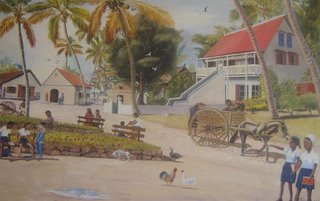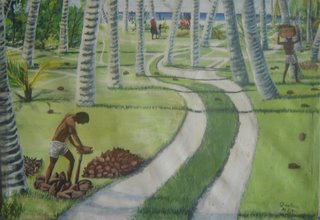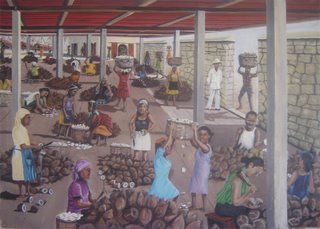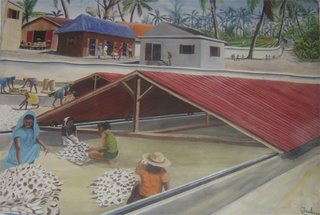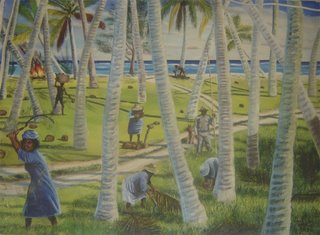The Artist:
On the 17th January 1947, like his parents and grand-parents before him, Clement Siatous was born in Peros Banhos. At the age of five he moved to Diego Garcia and stayed until the coconut plantations were closed down. Since then he has been living on the outskirts of the Mauritian capital Port Louis. He started painting in reaction to the British policy of trying to hide the fact that there used to be a settled population in the Chagos archipelago. He is therefore completing no less than forty pictures based on his memories of how life was like in the Chagos archipelago. The list of paintings below is therefore not complete, but they are still for sale. He intends, whenafter being able to finance the remaining of the project, to establish a fund for the defavourized Chagossian children growing up in poor conditions due to what happened to their parents. In 1998 he was decorated with the Mauritius Star and Key (MSK) for an exhibition in Port Louis the year before.
